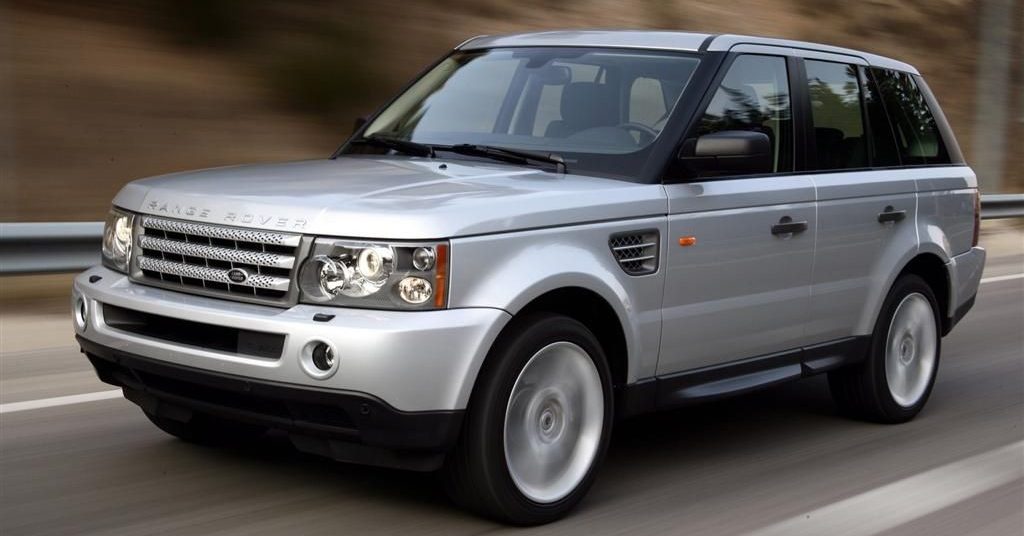Range Rover Sport L320

Range Rover Sport L320 (2005-2010)
The Range Rover Sport L320 is the first-generation vehicle of the Range Rover Sport series. Making its debut in 2005, the Sport was unveiled shortly after the Range Rover Stormer concept car, which previewed at the 2004 North American International Auto Show.
Designed by Richard Woolley, the Range Stormer was most definitely the ‘sportiest’ vehicle created by Land Rover up till then. While the Range Rover Sport most likely took inspiration from the Stormer concept, it did feature a more conservative design when it eventually reached the market.
Chassis & Exterior
The chassis of the Range Rover Sport L320 was an adaptation of the semi-monocoque design of the Discovery 3. This independently suspended design boasted all the benefits of a monocoque chassis (e.g. rigidity), while allowing for high-performance in off-road driving too.
Despite lending heavily from the Discovery 3 with certain modifications, it is smaller across the board and therefore only able to accommodate 5 people rather than 7.
Engine & Transmission
The Range Rover Sport L320 featured a 5.0 L supercharged all-aluminium Jaguar engine AJ-V8 and a naturally aspirated 4.3 L variant. However, in 2007 the naturally aspirated engine was removed from the UK market due to lack of popularity.
In 2007, the Range Rover Sport used a 3.6 L twin turbo diesel TDV8, an adaptation of the TDV6. All of the engine variants for the L320 are mated to a six-speed ZF automatic transmission with CommandShift.
Suspension & Terrain Response
Like many of the Range Rover vehicles, the Sport features Air Suspension with three ride height settings. These ride heights can be picked for standard driving, off-roading and a ‘lowered access mode’. The same cross-link suspension system was first seen in the L322 Range Rover and brings with a wide range of benefits including better off-road performance.
Another feature gleaned from the Land Rover Discovery 3 is the Terrain Response System. This pioneering technology, fitted as standard in the Range Rover Sport L320, allows for adjustment of the chassis and transmission in response to the type of terrain being navigated. These driving modes are grass, gravel, snow; mud and ruts; sand; and rock crawl.
Further to this the Range Rover Sport L320 also features a centre e-diff, optional rear e-diff, and in-dash display.
Incorporated Driving Technologies
The Range Rover Sport L320 also incorporates a wide range of driving technologies to aid performance. This includes:
- Dynamic Response – which, in reaction to cornering forces, activates and deactivates the electrohydraulic active anti-roll bars.
- Positive Torque – which electronically blips the throttle for faster downshifts. This is available on all TDV8 and Supercharged models.
- Speed Sensitive Steering system
- Bi-Xenon headlamps (optional) – which move with the angle of the steering wheel
- Active Cruise Control with Forward Alert System – detects vehicles travelling ahead and changes car speed to match
Evolution of the Land Rover Sport L320
Before the second-generation iteration of the Land Rover Sport made its debut, the original received somewhat of a facelift. Launched at the New York Auto Show in April 2009, the 2010-year vehicle was designed to be more aerodynamic and also received new headlights, grille and bumper.
Inside, the interior had a whole new fascia. Changes were made to the steering wheel, door linings, seats and switchgear, with more leather and fewer dash bound buttons.
Under the hood, the 2010 was also treated to three new engine options. These were:
- 5.0 litre petrol V8 engine
- 3.0 litre TDV6
The 2010 model year Range Rover Sport also received a new ZF HP28 six-speed automatic transmission and a slew of suspension refinements, including the introduction of a damping system and improvements to the Terrain Response system.
In 2012, the L320 received another face-lift, this time with only a few minor changes. This included the addition of an electric power tailgate and, in the interior, a revised media interface with integrated Bluetooth connectivity. While no new engines were bought in for this model year, a ZF 8 speed automatic transmission was added and a rotary wheel gear selector.







